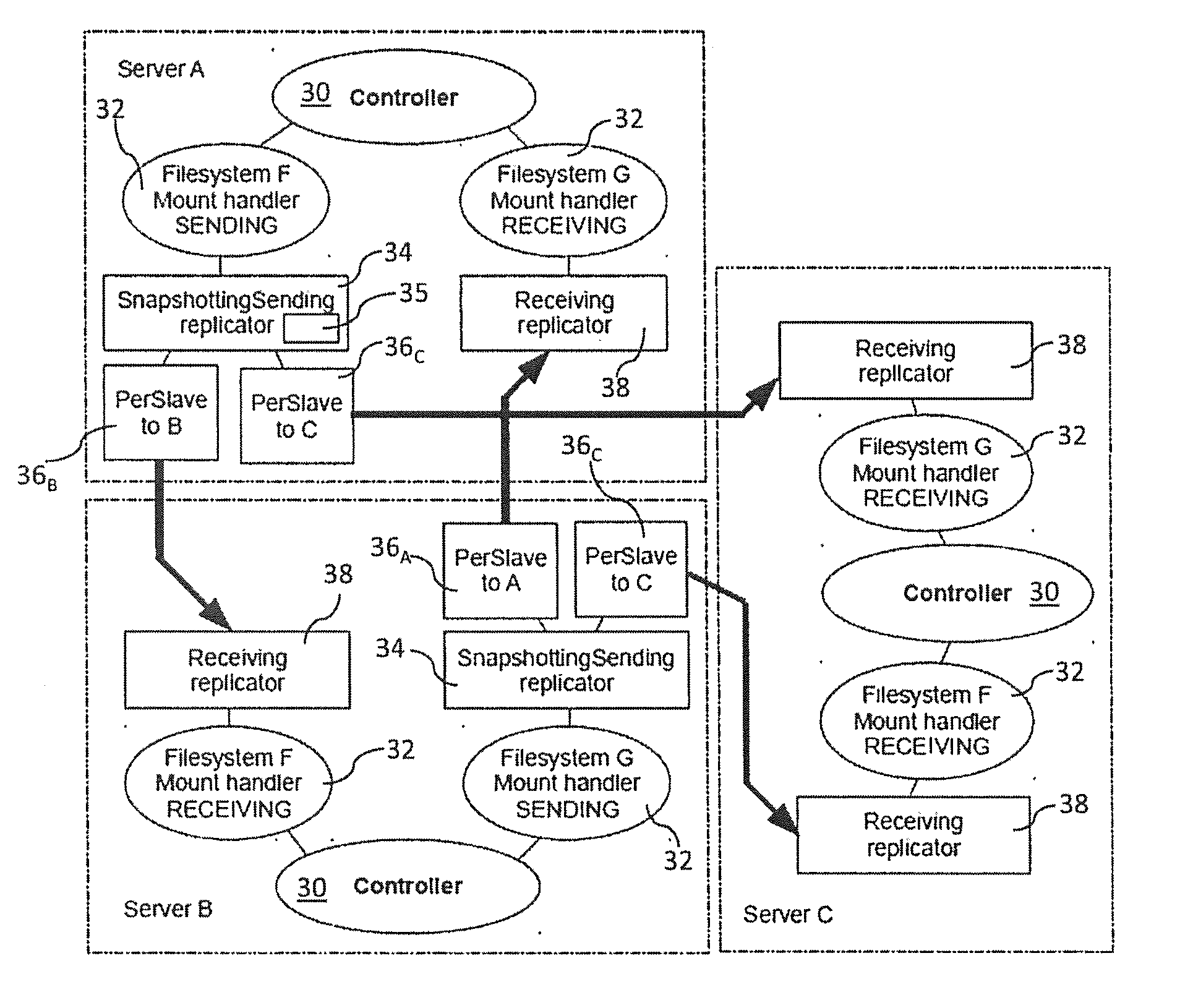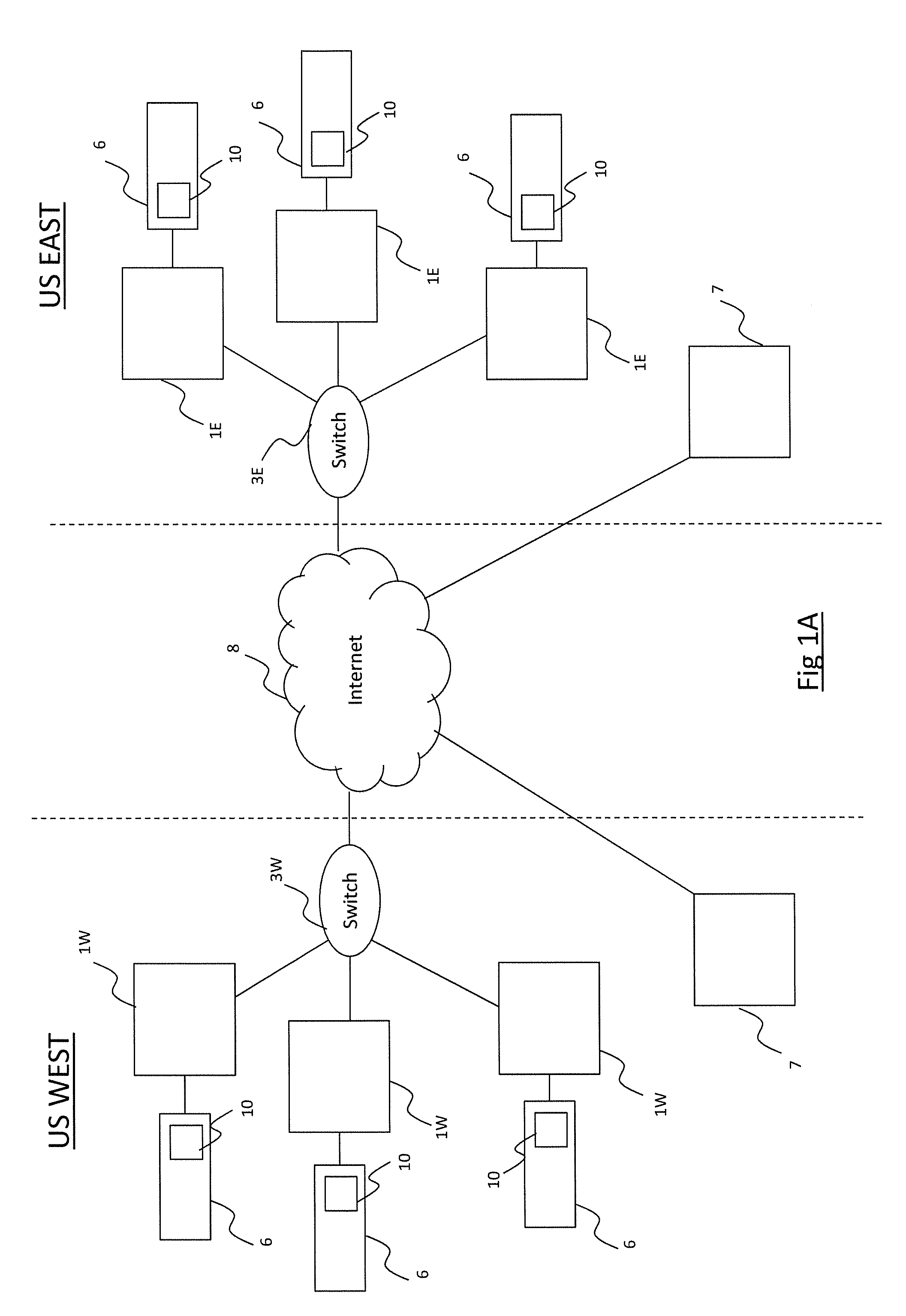System for live-migration and automated recovery of applications in a distributed system
a distributed system and application technology, applied in the field of multiple applications, can solve the problems of system failure, system failure of single point in the operating system, and extremely difficult (i.e. expensive) to completely eliminate single,
- Summary
- Abstract
- Description
- Claims
- Application Information
AI Technical Summary
Benefits of technology
Problems solved by technology
Method used
Image
Examples
Embodiment Construction
Terminology
[0125]FIG. 1a illustrates a schematic architecture of a computer system in which the various aspects of the present invention discussed herein can usefully be implemented. It will readily be appreciated that this is only one example, and that many variations of server clusters may be envisaged (including a cluster of 1).
[0126]FIG. 1A illustrates a set of servers 1 which operate as a cluster. The cluster is formed in 2 subsets, a first set wherein the servers are labelled 1E and a second set wherein the servers are labelled 1W. The subsets may be geographically separated, for example the servers 1E could be on the east coast of the US, while the servers labelled 1W could be on the west coast of the US. The servers 1E of the subset E are connected by a switch 3E. The switch can be implemented in any form—all that is required is a mechanism by means of which each server in that subset can communicate with another server in that subset. The switch can be an actual physical sw...
PUM
 Login to View More
Login to View More Abstract
Description
Claims
Application Information
 Login to View More
Login to View More - R&D
- Intellectual Property
- Life Sciences
- Materials
- Tech Scout
- Unparalleled Data Quality
- Higher Quality Content
- 60% Fewer Hallucinations
Browse by: Latest US Patents, China's latest patents, Technical Efficacy Thesaurus, Application Domain, Technology Topic, Popular Technical Reports.
© 2025 PatSnap. All rights reserved.Legal|Privacy policy|Modern Slavery Act Transparency Statement|Sitemap|About US| Contact US: help@patsnap.com



